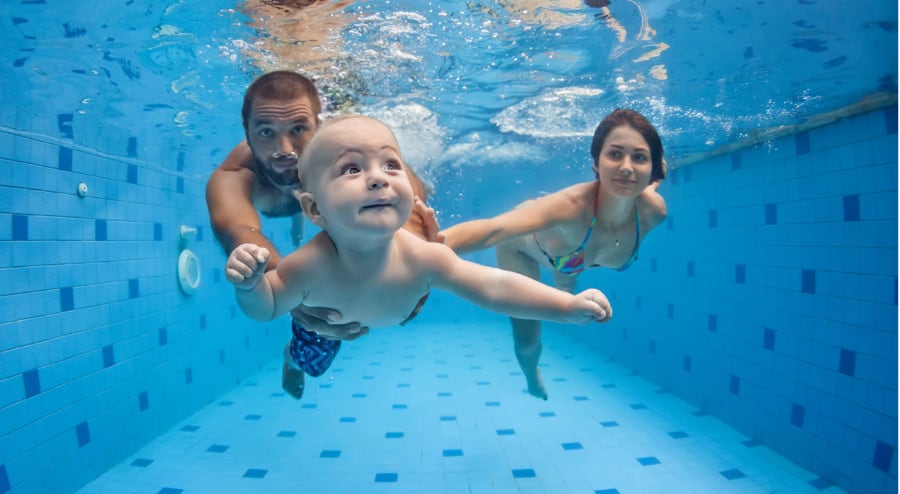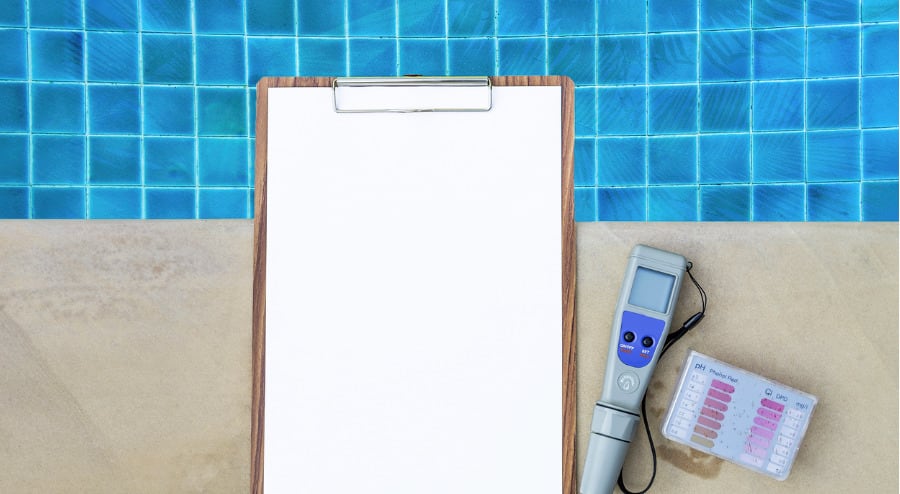According to the World Health Organization (WHO), 372,000 people drown worldwide each year. Closer to home, the Centers for Disease Control (CDC) report that on average, 10 people die every day due to accidental drownings, and 20% of those who die from accidental drowning are between the ages of one and four.
In addition, about half of those seen in the emergency room for drowning-related injuries are admitted to the hospital for further treatment. In fact, those who survive a near-drowning incident may sustain long-term brain damage due to lack of oxygen, giving them memory problems, learning disabilities, or other issues.
Drowning can happen quickly. A young child can become submerged in water, either in a pool, a pond, a water feature, or a bathtub, in a matter of seconds. In as little as two minutes, he or she may lose consciousness with permanent brain damage occurring in about five minutes. Very young children can drown in mere inches of water—if it is enough to cover the mouth and nose, it is enough for a child to drown in—and they will not be able to call for help.
Keeping Your Family Safe Around Water
With all these grim statistics, it’s clear that practicing some simple safety steps is essential if you have a pool or hope to enjoy the water. The good news is that such steps are generally pretty easy to do.

1. Active adult supervision is required. Never leave a child alone in or near water, whether it is a bathtub, a pool, a spa, or a home or community water feature such as a fountain or retaining pond. If you notice a child is missing, begin an immediate search beginning with the water feature. The risk of drowning increases when supervising adults are distracted or intoxicated.
2. Learn water safety skills.
- Teach your children to swim, and learn to swim yourself. If you cannot swim, it will be difficult for you to intervene in a situation where your child is in water-related danger, and children who can swim are far less likely to become drowning victims themselves. During swim lessons, children will learn vital water safety rules and survival techniques such as treading water, floating, and swimming to safety. Lessons are available in most communities, and may be offered through your area park system, your local school system, or the YMCA.
- Learn how to administer CPR. The American Red Cross offers classes across the nation.
- Always wear properly fitting, standards-compliant life jackets when boating and engaging in water recreation, even if you are a strong swimmer.
3. If you own a pool or spa, install appropriate safety equipment to keep family, visitors, and neighbors safe.
- Fences around your pool should be at least four feet tall, have a self-latching gate with a gate alarm, and completely surround the pool.
- Use a lockable cover for your spa to prevent unsupervised access.
- Install door alarms for patio doors that access the pool area.
- Use a surface or underwater alarm to alert you when someone has entered the water unexpectedly.
- Make sure that drain covers are safety-compliant and that covers are in working order.
Additionally, make sure that you remove any areas of standing water as soon as possible. Because babies can drown in as little as one inch of water, standing water in bathtubs, buckets, kiddie pools, and on top of the pool or spa covers poses a serious hazard.
Be Water Aware: Other Water Hazards in the Home
If you do not have a pool at home, you may think that you are in the clear when it comes to water safety. While drowning is a leading cause of death for young children, it is not the only danger that water can present, however.
- Slips and Falls. Some outdoor decking or interior tile floors can become slick when wet. Exercise caution when these areas are wet and clean up spills as soon as possible to avoid slips and falls.
- Sprinklers. Children love to play in the sprinklers in the yard on a hot day. Do not allow children to place their faces directly in the spray or direct the spray into another child’s face. Keep babies away from manual or automatic lawn sprinklers.
- Scalds. Check the settings on your water heater. Water temperatures of 140º F can badly scald skin in as little as five seconds. In homes with young children, lower the water heater’s setting to 120º F to prevent accidental burns. Always check the bath or shower temperature before allowing your child to access the water.
As parents, you are responsible for your child’s safety and well-being. Keeping them safe around water and teaching them water safety skills is an essential part of parenting.
Sources
https://www.washingtonpost.com/news/wonk/wp/2014/10/01/92-of-patients-say-medical-marijuana-works/?utm_term=.60c6e767d43f
https://www.cancer.org/treatment/treatments-and-side-effects/complementary-and-alternative-medicine/marijuana-and-cancer.html
https://www.ncbi.nlm.nih.gov/pmc/articles/PMC3180521/
https://www.cancer.gov/about-cancer/treatment/cam/patient/cannabis-pdq#link/_7
https://www.alz.org/facts/
https://content.iospress.com/articles/journal-of-alzheimers-disease/jad140093
https://www.cbsnews.com/news/seniors-and-marijuana/
http://www.businessinsider.com/medical-marijuana-effective-treatment-chronic-pain-2017-1
https://www.drugabuse.gov/publications/research-reports/prescription-drugs/trends-in-prescription-drug-abuse/older-adults
time.com/4419003/can-medical-marijuana-help-end-the-opioid-epidemic/
https://www.health.harvard.edu/mind-and-mood/medical-marijuana-and-the-mind
https://www.drugabuse.gov/publications/drugfacts/marijuana-medicine
https://www.eatingdisorderhope.com/blog/chronic-illness-and-eating-disorder-development-in-the-elderly-patient
https://www.psychologytoday.com/blog/your-brain-food/201204/the-connection-between-anorexia-bulimia-and-marijuana
https://www.vice.com/en_us/article/wd7jwx/should-weed-be-used-to-treat-eating-disorders-511
https://www.aao.org/eye-health/diseases/what-is-glaucoma
https://www.aao.org/eye-health/tips-prevention/medical-marijuana-glaucoma-treament
http://www.oregoneyes.net/glaucoma-and-marijuana/
https://www.scientificamerican.com/article/marijuana-may-boost-rather-than-dull-the-elderly-brain/
http://onlinelibrary.wiley.com/doi/10.1111/add.13670/full
http://abcnews.go.com/Health/story?id=118104&page=1
http://www.thecannabist.co/2016/07/27/legal-marijuana-sales-annually/59505/
https://www.healthline.com/health-news/why-are-more-seniors-using-marijuana#5
https://www.forbes.com/sites/carolynrosenblatt/2017/08/21/can-medical-marijuana-help-aging-parents-insomnia/#67ed5d4927ce
https://www.forbes.com/sites/mikemontgomery/2017/07/19/edibles-are-the-next-big-thing-for-pot-entrepreneurs/#2b8d6969576b
https://www.justice.gov/opa/pr/justice-department-announces-update-marijuana-enforcement-policy
http://www.ncsl.org/research/health/state-medical-marijuana-laws.aspx
You Might Also Like
Drowning is a leading cause of death for young children with babies capable of drowning in as little as one inch of water.
You May Also Like
Resources | About Us | Contact Us
877-664-6140
1530 WILSON BLVD., ARLINGTON, VA, 22209


